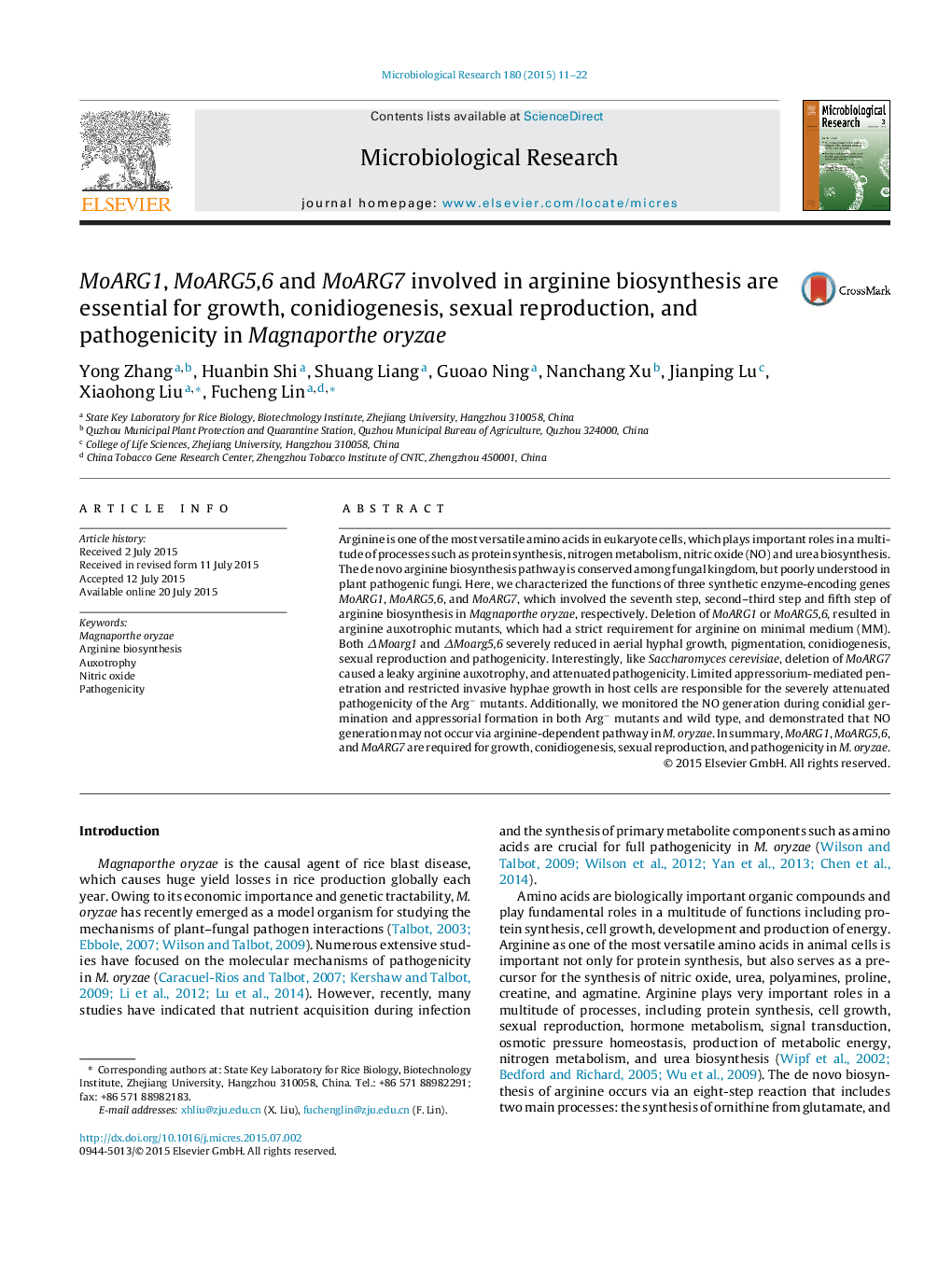| Article ID | Journal | Published Year | Pages | File Type |
|---|---|---|---|---|
| 2091969 | Microbiological Research | 2015 | 12 Pages |
Arginine is one of the most versatile amino acids in eukaryote cells, which plays important roles in a multitude of processes such as protein synthesis, nitrogen metabolism, nitric oxide (NO) and urea biosynthesis. The de novo arginine biosynthesis pathway is conserved among fungal kingdom, but poorly understood in plant pathogenic fungi. Here, we characterized the functions of three synthetic enzyme-encoding genes MoARG1, MoARG5,6, and MoARG7, which involved the seventh step, second–third step and fifth step of arginine biosynthesis in Magnaporthe oryzae, respectively. Deletion of MoARG1 or MoARG5,6, resulted in arginine auxotrophic mutants, which had a strict requirement for arginine on minimal medium (MM). Both ΔMoarg1 and ΔMoarg5,6 severely reduced in aerial hyphal growth, pigmentation, conidiogenesis, sexual reproduction and pathogenicity. Interestingly, like Saccharomyces cerevisiae, deletion of MoARG7 caused a leaky arginine auxotrophy, and attenuated pathogenicity. Limited appressorium-mediated penetration and restricted invasive hyphae growth in host cells are responsible for the severely attenuated pathogenicity of the Arg− mutants. Additionally, we monitored the NO generation during conidial germination and appressorial formation in both Arg− mutants and wild type, and demonstrated that NO generation may not occur via arginine-dependent pathway in M. oryzae. In summary, MoARG1, MoARG5,6, and MoARG7 are required for growth, conidiogenesis, sexual reproduction, and pathogenicity in M. oryzae.
